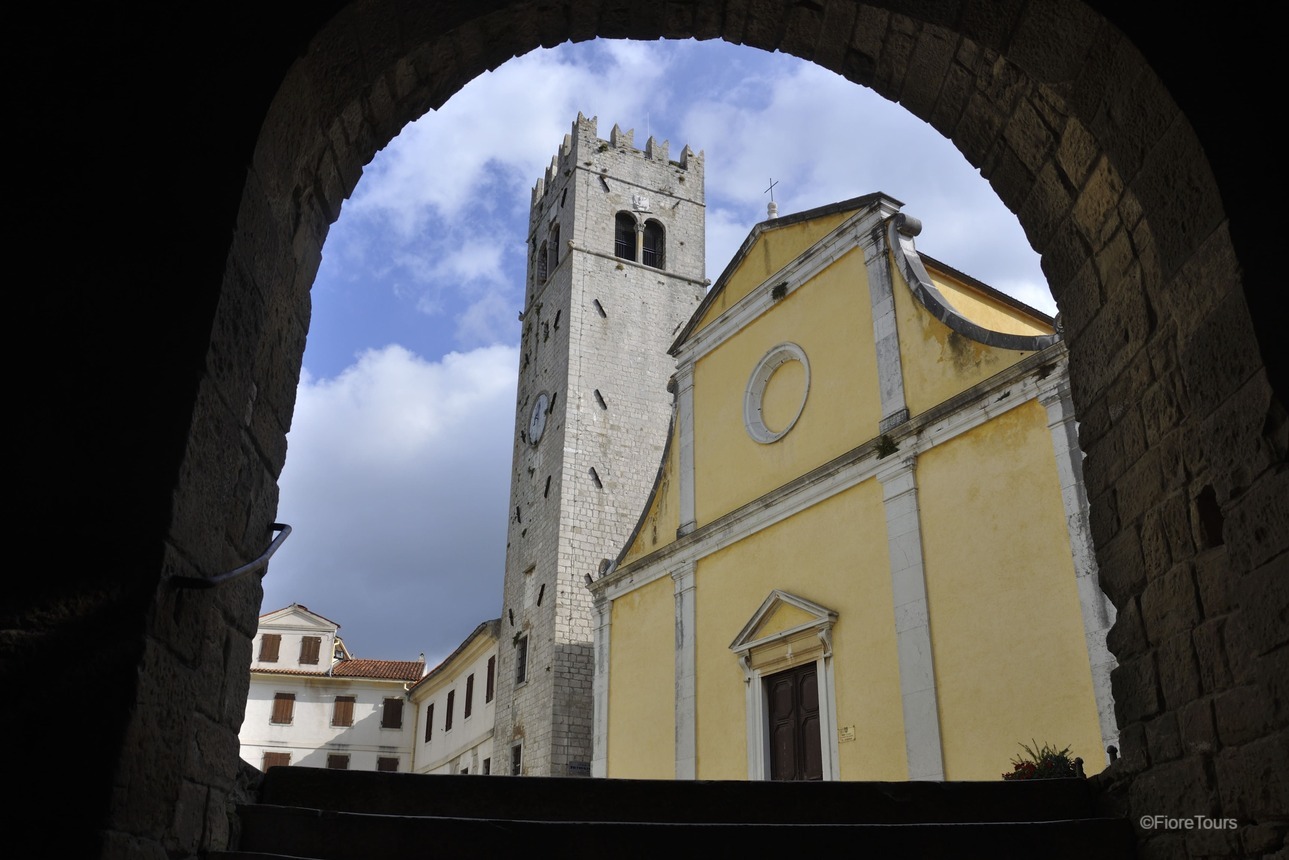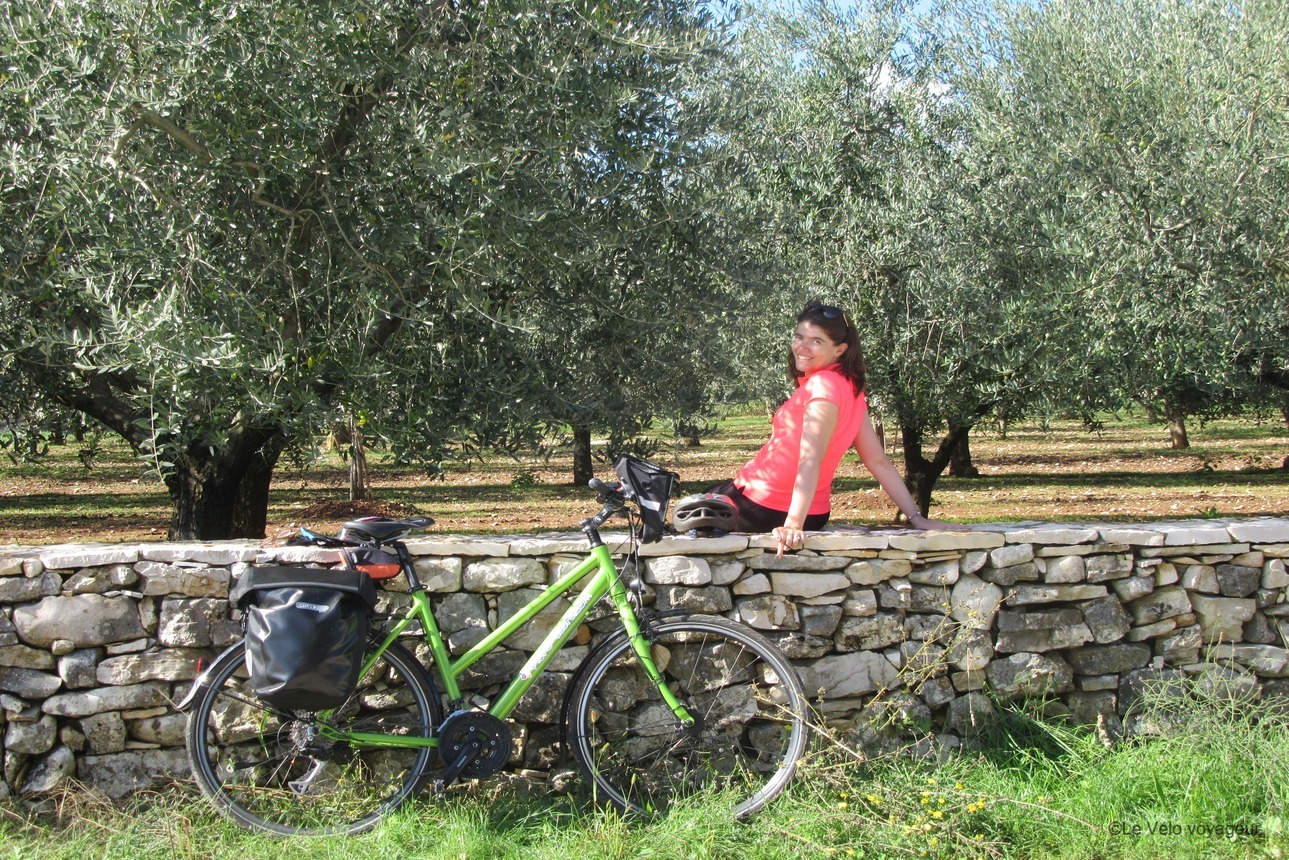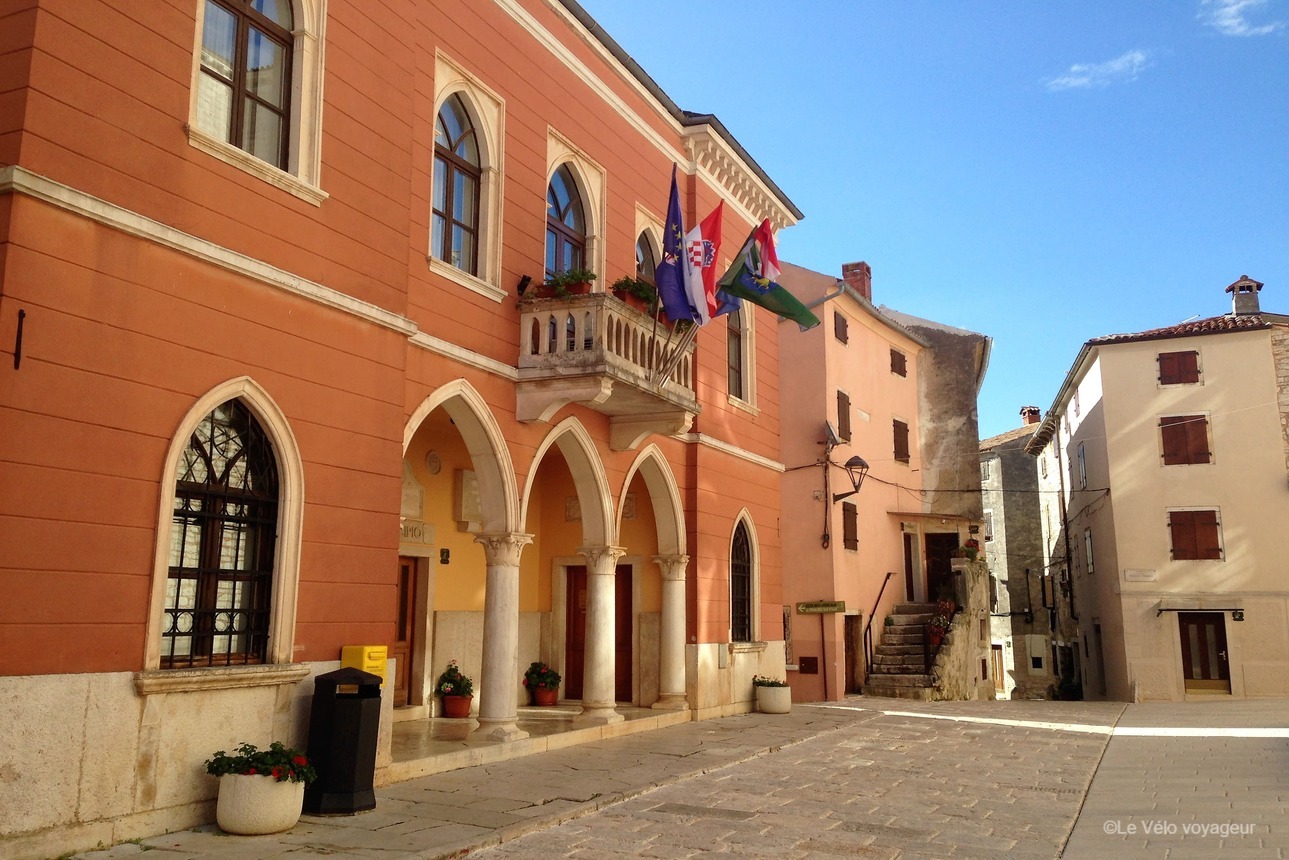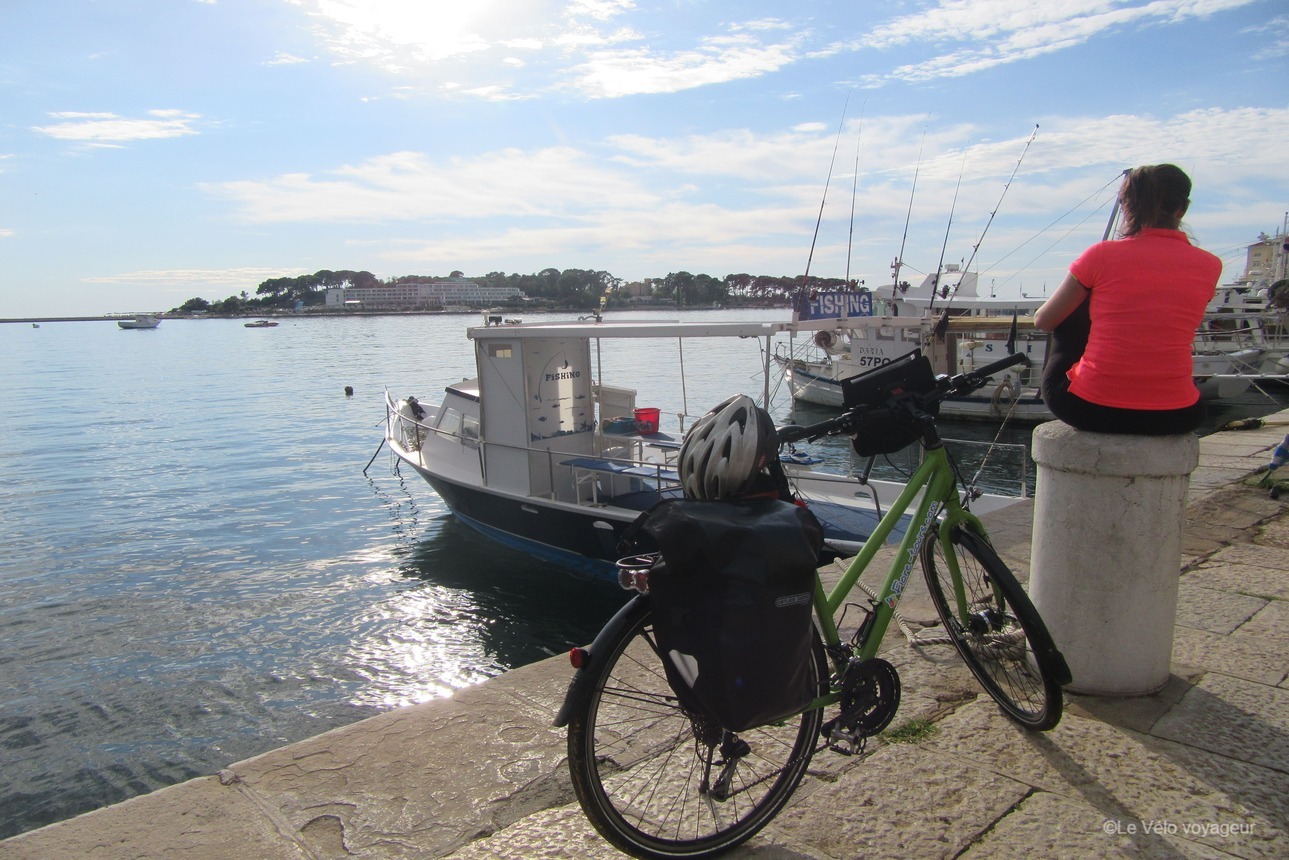From Italy to Croatia by bike: Trieste to Pula
This tour will lead you Italy to Croatia passing through Slovenia. You will discover the Croatian countryside, small villages and beautiful cities of the Istrian area.
A beautiful tour where you can explore the wonders of Italy, Slovenia and Croatia by bike
Discover the hidden wonders of Croatia. First, you will discover Trieste and then you’ll cycle through Slovenia on the legendary bikepath "the Parenzana", an old railroad track.
You will pass by salt marshes and reach some wonderful perched village like Buje and Motovun. You’ll also discover a lot of charming Croatian villages, where the architecture will remind you of Italy. Then the road passes through vinyards and will reach the Adriatic coast. A visit to Porec and Rovinj is essential. The coulours and the marinas of both cities will seduce you. At the end of the tour you reach Pula, the biggest town of Istria, where you can admire the roman amphitheatre.
Program
You arrive at your leisure in Triest. Take the time to discover the city by foot once you've settled in your hotel.
- 46 km
- 58 km
Your cycling adventure through 3 countries (Italy, Slovenia and Croatia) starts on the legendary Parenzana route, the narrow old railroad line that crosses the Istrian peninsula and links 33 typical towns and villages. After a few kilometers through the city of Trieste, you arrive in Slovenia. Heading south, you pass through the salt mines of Secovlje, a major Slovenian town. This town is also known for its ornithology. A few kilometers later, you cross the border into Croatia.
- 48 km
- + 443 m
This tour starts with an easy downhill ride to the coast on the northernmost point of the Istrian peninsula. There is a lighthouse which you can visit. According to the legend it was built by count Metternich as his love nest. Savudrija is one of the oldest lighthouses in the Adriatic, built in 1818. It is also the northernmost Istrian lighthouse. The trail continues south to Umag. The glamour, magnificence and glare of the times can be seen today in the Venetian houses of the old town. City walls and fortification are partially preserved as well as some renaissance and baroque buildings and churches. Vineyards and olive groves will create an atmosphere of the typical west Istrian landscape. Visit a wine cellar to taste the muscat, a local type of wine.
- 37 km
- + 693 m
Apart from enjoying the breathtaking landscape of the terrace-styled vineyards, which resembles a postcard from Tuscany, you can indulge the sensation the area of Buje gives, a real polyphony of fragrances and tastes. Cycling through magnificent rolling landscapes and lively Istrian vineyards, it will also be obvious why this bicycle path was once known once as the wine railway. While passing through many tunnels and over old bridges you'll feel the need to stop by many fascinating view points : from the charming medieval town of Grožnjan to Završje, until you reach Motovun, an ancient little Istrian town located atop a 277-meter-high hill, 21 km south-east from Buje. Its present appearance, with the city walls surrounding the centre of the town, dates back to the Middle Ages.
- 40 km
- + 367 m
After breakfast you continue cycling on the Parenzana trail over Vižinada and Kaštelir to the coast. The ride towards Poreč is particularly pleasant because you are riding along the coastline with beautiful bays where you can enjoy the breathtaking Mediterranean landscape : green vineyards and olive groves and tasty homemade foods, wines, brandy and honey produced in this area.
In the afternoon you reach Poreč, the town where you stumble over material and spiritual evidence of great cultures at every step. Cruise along the old city centre and visit the old Roman forum, the world famous Euphrasian Basilica with it’s mosaics, city palaces that belonged to the nobles, and fortifications.
- 34 km
- + 180 m
You can choose between taking a car transfer to Kanfanar or reach it on your own bike.
After cycling along the coastline you reach Vrsar, a romantic fishing town located on a hill. The bike ride continues through the magical forest of Kontija with a panoramic view of the beautiful landscape from the Lim bay to the ruins of the medieval town Dvigrad.
Passing Kanfanar and the hill of Maklavun (an astral-archaeological site, a tumulus from the Bronze Age) the finish of the day is in Rovinj.
The town is nicknamed little Venice and a typical Mediterranean seaside resort which will seduce you with its extraordinary beauty. In the dense tissue of the old city centre there are numerous magnificent palaces from different historical periods. Today most of them host a gallery or an art studio. If you wander through the narrow meandering streets you will suddenly arrive in front of the baroque church of St Eufemia, the greatest monument in the city, from which you can admire a magnificent view of the Mediterranean sea.
- 40 km
- + 309 m
You start riding along the coastline towards Pula. Riding through the ornithological reserve Palud with a rich variety of birds, a unique place. Under the gentle chirping, chilping and chattering of at least 215 different bird species you'll reach Fažana.
This city is situated on a low coast, well protected from the open sea and surrounded by vineyards and olive groves in the hinterland.
You then head for Pula, Istria's largest city. Visit the old town with its Sergius triumphal arch and the famous Arena, a Roman amphitheatre.
Enjoy one last stroll through the streets of Pula before your departure.
Accommodation Cyclist-friendly
Information
Beginning of the trip
As the first day is a non-biking day, you’ll arrive at your leisure, depending on your route. Please note that rooms are usually available by mid-afternoon, depending on your accommodation. Please inform your host in case of late arrival.
To get to the departure point
By plane: flight to Trieste, then taxi to the city center. Private transfer with our partner from the airport on request.
By train : to Trieste train station. Purchase the tickets on trainline.com.
To get back to the starting point
You can return by bus from Pula to Trieste (no train). In summer, we advise you to book your return ticket in advance.
Journey time is 2 to 4 hours.
You can also fly back directly from Pula. Private transfer with our partner on request.
- Croatia
- 8 day(s)
- Moderate
- ~ 40 km/day
- Itinerant
Tried and tested Trips!
-
Experience15 years' experience in cycling to advise and satisfy you
-
Tested & ApprovedThe whole team goes out into the field to design the itineraries and select the best partners (accommodation, bikes, etc.).
-
Quality of serviceA dedicated customer service team available and ready to listen, from the moment you book until you return from your holiday.
-
Secure paymentIndividual or fractional payment by secure means via our website
They've just returned from their travels!
We also recommend...
- Croatia
- Moderate
- ~ 40 km/day
- Itinerant








